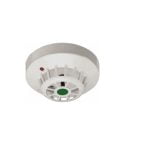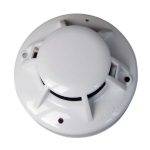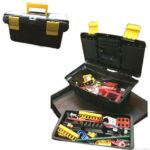Your list is empty, add products to the list to send a request
What Type of Detector is Used for Gas?

13
Dec
When it comes to workplace and home safety, gas detection is a critical concern. Toxic gases like carbon monoxide (CO), hydrogen sulfide (H2S), and flammable gases such as LPG pose significant risks if left undetected. Protecting lives and property requires understanding the best tools available. But what type of detector is used for gas, and how do you choose the right one?
In this article, we’ll explore the various types of gas detectors, their applications, and how they can safeguard your space. By the end of this post, you’ll have a clear understanding of which gas detectors suit specific environments and how Fire Supplies can help you ensure optimal safety.
Types of Gas Detectors
1. CO Detectors
Carbon monoxide (CO) is an odorless, colorless gas that can cause severe health issues or even fatalities at high concentrations.
Key Features
- Detects CO levels in real-time.
- Often includes alarms to alert occupants when thresholds are exceeded.
- Available as standalone or integrated systems.
Applications
CO detectors are vital for residential homes, workplaces with fuel-burning appliances, and confined spaces like garages or warehouses.
Pro Tip: Install a CO detector at head height to mimic human breathing zones for the most accurate readings.
2. LPG Detectors
Liquefied Petroleum Gas (LPG) is a highly flammable fuel source used in homes and industries. A leak can lead to explosions or fires if not detected promptly.
Key Features
- Sensitive to hydrocarbons such as propane and butane.
- Can be connected to ventilation or shutdown systems for automatic response.
Applications
Ideal for kitchens, restaurants, gas plants, and industrial sites where LPG is used.
Why Choose Fire Supplies?
At Fire Supplies, we provide high-quality LPG detectors tailored to your needs, ensuring compliance with safety standards.
3. O2 Detectors
While oxygen (O2) is vital for life, too much or too little of it can pose a hazard.
Key Features
- Monitors oxygen levels to ensure they stay within safe limits (typically 19.5%-23.5%).
- Compact designs for portable or fixed use.
Applications
Used in laboratories, medical facilities, and industries dealing with confined spaces like mining or tunneling.
4. H2S Detectors
Hydrogen sulfide (H2S) is a toxic gas known for its “rotten egg” smell. It’s commonly found in oil and gas industries.
Key Features
- Detects and alerts users to unsafe H2S concentrations.
- Rugged models available for harsh environments.
Applications
Perfect for petrochemical plants, sewage treatment facilities, and confined workspaces.
Expert Insight: Fire Supplies offers explosion-proof gas detectors for such volatile environments, combining durability with precision.
5. Combustible Gas Detectors
These detectors identify the presence of flammable gases before they reach explosive concentrations.
Key Features
- Detect gases like methane, ethylene, and hydrogen.
- Equipped with catalytic or infrared sensors.
Applications
Widely used in manufacturing, oil refineries, and chemical processing plants.
6. Explosion-Proof Gas Detectors
For industries operating in hazardous zones, explosion-proof detectors are a must.
Key Features
- Enclosed in durable, flame-resistant casings.
- Ideal for detecting various gases in high-risk areas.
Applications
Common in offshore drilling platforms, chemical plants, and grain storage facilities.
Why Fire Supplies Stands Out
Our range of explosion-proof gas detectors ensures unmatched safety and performance in the most challenging environments.
How to Choose the Right Gas Detector
Assess the Environment
Consider the type of gas present and the environment’s conditions (temperature, humidity, etc.).
Sensor Technology
Understand the sensor type:
- Electrochemical Sensors for toxic gases like CO and H2S.
- Catalytic Sensors for combustible gases.
- Infrared Sensors for hydrocarbon detection.
Installation and Maintenance
Ensure the detector is easy to install and maintain. Fire Supplies offers products with user-friendly features and robust customer support.
Benefits of Gas Detectors
1. Enhanced Safety
Detecting hazardous gases early reduces the risk of accidents, fires, and health issues.
2. Regulatory Compliance
Gas detection systems help businesses comply with industry safety standards.
3. Cost Savings
Preventing gas leaks can save on potential repair and liability costs.
Fire Supplies Advantage: With our wide selection of reliable gas detectors, you can ensure your safety without compromising on quality or budget.
FAQs
1. What are the most common gases detected by gas detectors?
Carbon monoxide, hydrogen sulfide, LPG, methane, and oxygen levels are the most monitored gases.
2. Can gas detectors be used outdoors?
Yes, many gas detectors, especially explosion-proof models from Fire Supplies, are designed for outdoor use.
3. How often should I calibrate my gas detector?
Calibration should be done every 6-12 months, depending on the manufacturer’s recommendations and usage conditions.
Conclusion
Choosing the right gas detector can mean the difference between a safe environment and a potential disaster. By understanding the types of gas detectors available—such as CO, LPG, O2, and H2S detectors you can make informed decisions to protect your home or workplace.
Fire Supplies offers an extensive range of gas detectors designed to meet diverse needs, from residential safety to industrial-grade solutions. Explore our catalog today to find the perfect match for your requirements, and ensure your peace of mind.


























